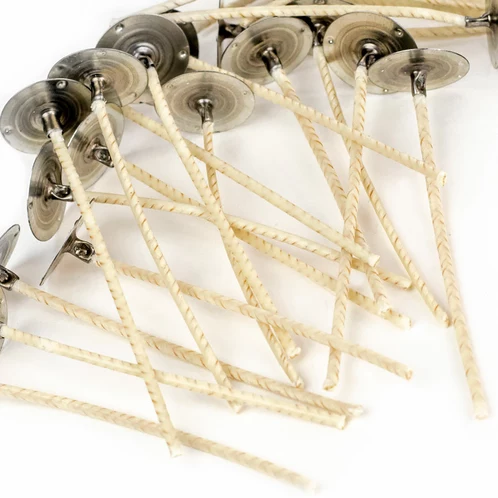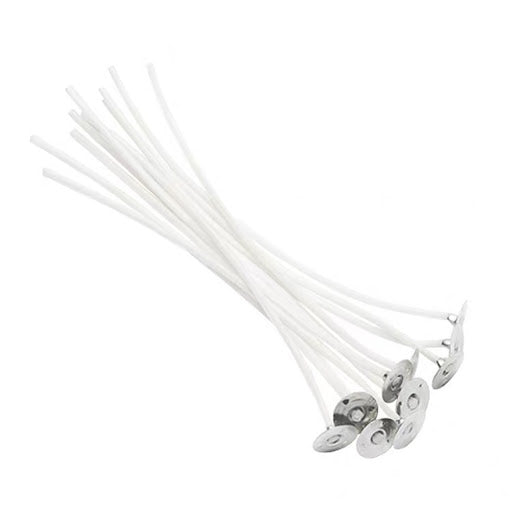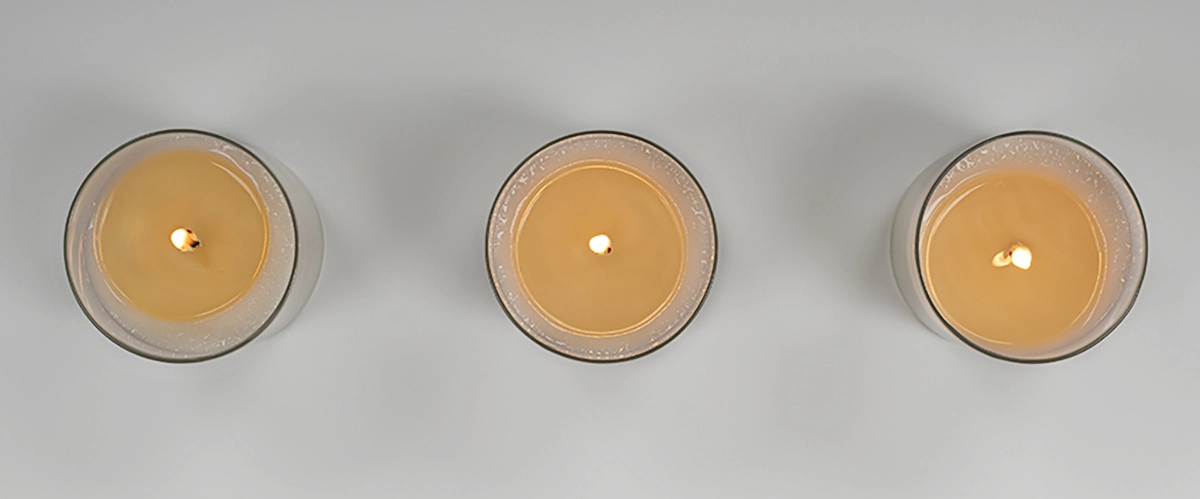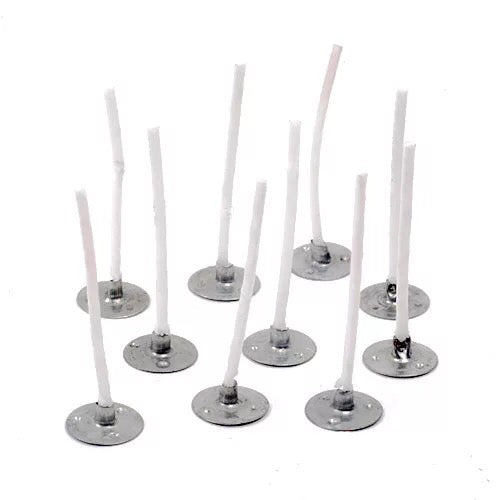How to choose the right wax wick?
Share


Finding the right wax wick can be a tricky businessOur customer service colleagues have been receiving different questions about wax wicksTherefore, we have prepared the following information, hoping to give everyone a basic understanding of candles and wax wicks
The importance of choosing the correct candle wick
A suitable wax wick is the key to making a perfect candle product, because a suitable wax wick can make the candle burn with the best flame, without producing black smoke, and can also emit fragrance evenly and continuously.
Candle performance using correct wax wick

|
|
Factors affecting the selection of wax core
1. Type of wax material
Different wax materials (such as soy wax, paraffin wax, jelly wax, beeswax, etc.) have different densities and melting points
2. The diameter of the candle
The larger the diameter of the candle, the larger the wax wick required
3. Fragrance type and dosage
4. Pigment dosage
5. Container material and shape
 The above suggestions are onlyestimates
The above suggestions are onlyestimates
Use this chart as a starting point to conduct your own burn testsWe cannot guarantee that these wicks will burn perfectly in your candle
The candles used in these burn tests were uncolored and used 7.5% fragrance oil
Colored or highly scented candles may require a larger size than recommended in the reference
We offer most of our candle wick range in bags of 10 so you can do your initial burn test with a minimal purchaseYou may find it helpful to have a range of wick sizes ready for any ongoing or future testing
*BeeswaxNote:
Beeswax is a versatile wax that can be used in container candles, pillar candles, and more, but wick selection can be tricky ! When, where and how beeswax is produced all affect how it behaves in candles
It is difficult to predict which wax wick size to use because there are so many variablesTherefore, more testing is required to find the candle that works best for you
Wax wick size
Wax wicks all follow the same rules
In a series, the larger the number, the larger the wick
For example: CD14 is always larger than CD10; size 5 is always larger than size 4
What is a combustion test?
Burn testing is the process of evaluating the performance of a finished candle from the first burn to the last burnThe goal is to ensure that your candle burns at a normal rate, does not produce abnormal amounts of soot, and is safe for the end user
The various components of a candle (type of wax, fragrance oil, fragrance content, candle dye, wick selection, container diameter and shape) all affect how the candle burnsEvery recipe you create should be burn tested before giving it to a friend or selling it to a customer
Required items:
- Finished candle (cured for at least 24 hours)
- betweenfoot
- Wax wick scissors or Scissors
- Test record card
- Take photos with smartphone or camera

First of all, remember that you are burning something, so soot is completely normal and expected!
Soot is simply a buildup of carbon produced when the wick burnsSoy wax usually produces white soot, which is difficult to detect with the naked eye; paraffin wax produces black soot, which is easier to see and identify.
If you occasionally see some soot coming out, there is no need to worryBut if you see a lot of soot on a regular basis, or if you see heavy soot buildup near the wick, it may be a sign that you should cut the wick shorter or use a thinner wick.Excessive soot can also be caused by adding too much fragrance oil, or certain types of fragrance oil
Flame Size and Dynamics
Most flames are about one inch (2.5 cm) tall, but flames up to two inches (5 cm) can be considered normalThe flame will be relatively stationary for most of the burning time, but will occasionally move slightlyAs the amount of wax decreases, the heat in the container will increase, so you may see the flame move slightly more later in the burnIf the flame swings excessively, this may indicate drafts in the roomIf you are not sure, check whether there is an air outlet at the burning test location and try the next burning test in a different area
| The wax core is too big | The wax core is too thin |
|
|
 |
 |
 |
 |






